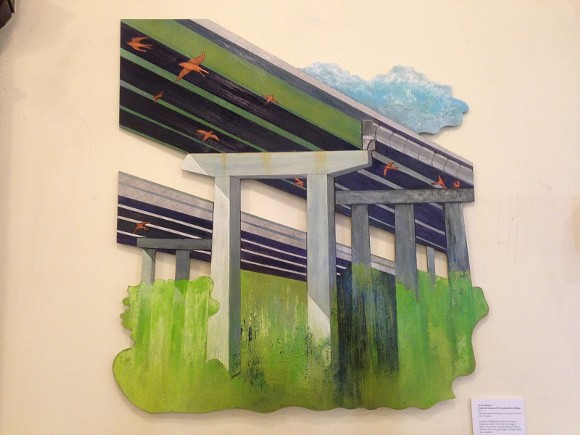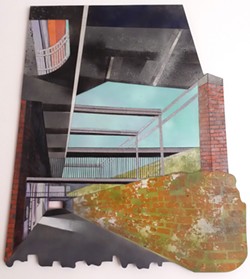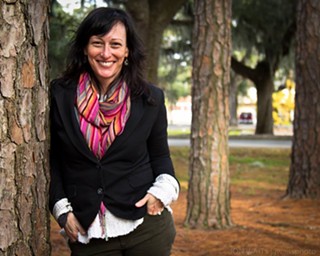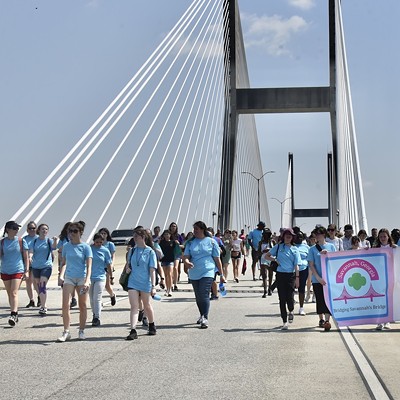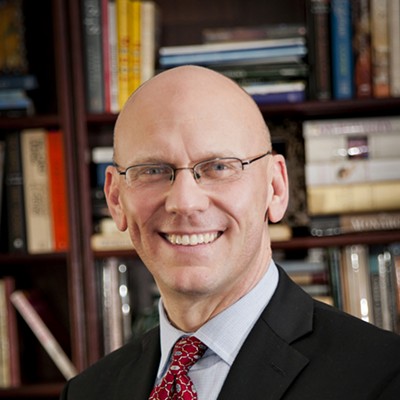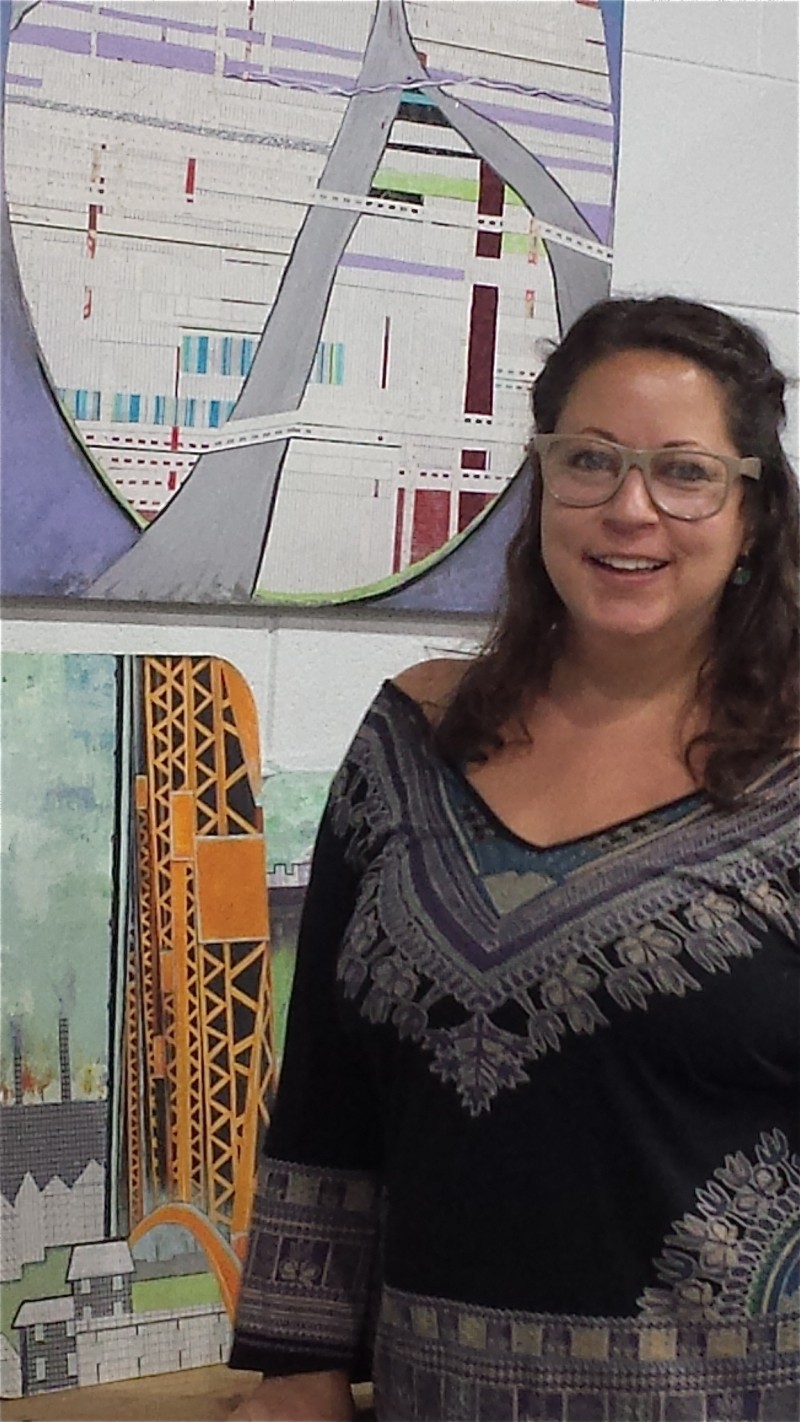
WHEN artist Lisa D. Watson was a girl in small town Ohio, she used to like to hang out under the bridge near her house.
For some kids, in some towns, that could have been the beginning of a bad trend. But for Watson, it was a gateway to wonder:
“I used to sit in my canoe for hours, watching the ducks and the turtles,” she recalls. “It gave me this great appreciation for the things that happen underneath the structures we take for granted.”
Her father, a steel salesman, also instilled in her an awareness of the expertise, materials and human labor that go into building bridges.
This, along with being stuck in traffic as an adult, fostered a lifelong affection for highway infrastructure.
“I’m obsessed with overpasses,” laughs the longtime Los Angeles dweller who moved to Savannah a decade ago after her parents retired to Hilton Head.
“The idea of someone finding the need for an extension between two spots and building it fascinates me.”
Bridges are practical, but they’re also metaphorical. After years in L.A. as an art director for television and commercials, the Columbus College of Art & Design graduate found that crossing the country reinvigorated her fine art career.
Her murals are included in video artist Bill Viola’s installations worldwide, and her work has been exhibited locally at Indigo Sky Community Gallery and the JEA.
Given her affinity for linking people and places, it’s no surprise that when it came to artistically exploring and documenting her current surroundings, she chose to spotlight its bridges.
“It’s the one thing that hasn’t been focused on,” says Watson.
“People paint the water and the buildings, but other than the Talmadge, not so much the bridges.”
Watson has created multimedia works inspired by seven of Savannah’s spans—some longer and more famous than others—for “City Traversed,” hanging along the curved walls of the City Hall Rotunda through the end of 2015.
The exhibit reveals the underappreciated symmetry of the CSX Railroad extension over the Savannah River and the engineering feat of the Sam Varnedoe Drawbridge that carries traffic to and from the island neighborhoods.
The latter, slated for demolition because of its tendency to get stuck in the “open” position and snarl traffic for entire afternoons, was built in 1963 and utilizes a moveable, double-leaf bascule and a fixed concrete multi-beam stringer, a combination that was the height of technology when it was conceived.
“It’s a complicated contraption,” marvels Watson.
Using paint, reclaimed industrial wood waste and recycled security envelopes to intricately layer color and texture, Watson employs a pragmatic sensibility that echoes the clean lines and zero waste of modern architecture.
Her work also reflects the sensitivity to the environment cultivated from her years spent in the canoe under her childhood bridge’s shadow.
Several of the bridges in “City Transversed” cross the water, and with the help of Bull River Cruises’ Captain Mike and Kathy Neal, she was able to conduct research from the same perspective.
“I like bridges because they’re a type of architecture that can have a positive impact on the ecology,” says Watson, who aims to do the same with her landscape and interiors company, Plan It Green Designs.
In the largest piece, the I-95 Savannah River Bridge receives dynamic treatment, its pylons reaching out of the marsh towards the clouds, a spray of orange swallows flying out from the eaves.
Ironically, this same stretch is featured on the website Uglybridges.com. While the website is less about aesthetic judgement than it is a call for attention to America’s thousands of bridges in dire need of maintenance, Watson takes umbrage at the slight.
“They might think differently if they experienced the flora, alligators, birds and their songs that exist underneath,” she writes in her artist statement.
“It’s purely magical.”
Savannah’s most iconic bridge, however, could use a bit of makeover in Watson’s view. The double-towered, cable-stayed bridge that connects Savannah with South Carolina replaced a cantilever truss bridge in the early 1990s, a necessary upgrade as cargo ships calling on the Port of Savannah became larger.
It’s a fairly basic design, seen in several nearby municipalities including Charleston and Jekyll Island. When it was built, the new bridge was originally dedicated to historic Creek leader Tomochichi, but public pressure dictated that it retain the moniker of former Georgia governor and avowed segregationist Eugene Talmadge.
“It gives the city a tiara, it brings in height,” observes Watson of the structure. “But we’ve got to get rid of the name.”
Her favorite bridge in the series is hardly a bridge at all, just a vine-covered section of railroad that rolls over the two westbound lanes of Henry Street.
“It was built more than a hundred and fifty years ago,” notes Watson. “Look at the curve of the handrail, the big bolts, that little bit of rust, it’s just beautiful.”
She laments while there are exceptions, most modern American bridges are aesthetically substandard and don’t reflect their role as connectors. She does find hope in a proposal put forth in 1996 for a bridge that unified the talents of architect Frank Gehry, sculptor Richard Serra and German engineer Jorg Schlaich.
While it was never built, the prospect of a multi-disciplinary approach to bridge-building brings together all of Watson’s passions.
“When a city is in need of a bridge, this type of collaboration could change the aesthetic level of bridges being built today,” she says excitedly, citing potential sculptures, gardens, bike/pedestrian lanes, public spaces and solar powered lighting.
“I would love to be part of a bridge design team. Imagine all the possibilities!”

